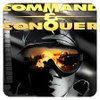One less dimension, no less depth
One less dimension, no less depth
Vote: (3 votes)
Program license: Paid
Developer: Gearbox Software
Works under: Windows
Vote:
Program license
(3 votes)
Paid
Developer
Gearbox Software
Works under:
Windows
Pros
- Engaging prequel narrative that enriches the Homeworld universe
- Immersive and highly detailed vehicle and environmental design
- Complex tactical gameplay with varied unit management and strategies
- The strategic use of terrain adds depth to battles
- Intuitive command interface facilitates smooth gameplay
Cons
- Limited by a 2D plane compared to earlier 3D Homeworld titles
- Some issues with pathfinding and camera perspectives in large battles
- Balancing unit combinations can sometimes feel restrictive
An Exhilarating Prequel on the Sands of Kharak
Introduction to the Fray
Foundational Storytelling
The game pivots on a crucial expedition by the Kushan people, as they navigate the hostile deserts of Kharak in pursuit of an enigmatic artifact that could be the beacon of hope for their survival. Commanding the colossal land-carrier Kapisi, players orchestrate this trek across the sands, bearing the weight of their civilization's future. The desert setting serves not only as a backdrop but also contributes thematically by highlighting the scarcity of resources and the relentless adversity faced by the protagonists.
Design and Atmosphere
Homeworld: Deserts of Kharak shines with its painstakingly detailed visual signature. The Kapisi, a monolithic vessel, becomes your traveling bastion, equipped with all the necessities of a wartime HQ. Its existence is a tribute to the giant motherships of the series' past, instilling a sense of continuity despite the change in environment. The design aesthetic extends to the land crafts as well—the buggies, armored trucks, and railguns all bear the hefty, utilitarian charm of a civilization making its last stand.
Gameplay Mechanics
True to its RTS roots, the game marries the quintessential elements of resource management, unit construction, and strategic combat. The missions cover a spectrum—from skirmishes against formidable foes to surviving the planet's harsh elements—all the while requiring a vigilant eye on resource gathering. The Kapisi's strategic importance cannot be overstressed as it dynamically shifts between an offensive charge to a bulwark against oncoming threats.
Engaging in combat requires one to recognize and counter enemy classes—light, heavy, and ranged—a dance of military wits where every move can be crucial. It goes beyond simple rock-paper-scissors tactics; each unit's special abilities and your own strategic acumen can sway the tides of battle. The interface facilitates command inputs through an intuitive mix of mouse control and hotkeys, though it does present some hiccups in unit path-finding and providing the optimal view during more extensive engagements.
Strategic Depth and Battles
Players can't afford to be reckless with their units. A buggie's speed boost or a smoke screen from light armor must be deployed with precision. Unit combinations can mitigate weaknesses, but this requires a sacrifice of their individual strengths. Elevation also plays a crucial role; units perched atop dunes have clear advantages, though the slow-moving Kapisi on lower ground can create tension-filled moments.
Conclusion: A New Chapter in Homeworld Lore
Homeworld: Deserts of Kharak might not offer the same multi-dimensional challenges as its stellar ancestors, but it stands splendidly on its own two feet. Gripping strategy, a detailed universe, and a strong connection to its lineage make for an RTS experience that both old fans and newcomers can find engrossing. Blackbird Interactive has crafted not just a game but a vibrant chapter that enriches the Homeworld tapestry.
Pros
- Engaging prequel narrative that enriches the Homeworld universe
- Immersive and highly detailed vehicle and environmental design
- Complex tactical gameplay with varied unit management and strategies
- The strategic use of terrain adds depth to battles
- Intuitive command interface facilitates smooth gameplay
Cons
- Limited by a 2D plane compared to earlier 3D Homeworld titles
- Some issues with pathfinding and camera perspectives in large battles
- Balancing unit combinations can sometimes feel restrictive




